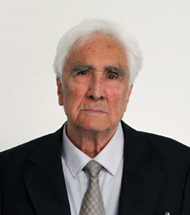Leonardo da Vinci utilizó la teoría musical para crear perspectiva en ‘La última cena’, propone un experto en el ICS
Con motivo del 500 aniversario de la muerte del artista e inventor, Joaquín Saura impartió una conferencia en la que aseguró que “la música invade su obra”

FOTO: Natalia Rouzaut
Leonardo da Vinci utilizó la teoría musical para crear perspectiva en el cuadro de ‘La última cena’, sostiene Joaquín Saura, experto en el artista e inventor y en teoría musical. El especialista expuso su teoría en una conferencia de la Universidad de Navarra con motivo del 500 aniversario de la muerte del genio, invitado por el proyecto ‘Creatividad y herencia cultural’ del Instituto Cultura y Sociedad (ICS).
“La música invade su obra”, afirmó, ya que, con ella, crea las formas geométricas que componen, delimitan y estructuran el mural.
Según apuntó, en aquella época se utilizaba con frecuencia el sistema musical como sistema numérico y geométrico. Da Vinci, quien también era músico, utilizó la escala musical y sus intervalos (octavas) para crear medidas. Si el sonido es una vibración, la nota do es la vibración del objeto por entero, una unidad completa. Cuanto más aguda sea la nota, menor es el espacio que vibra (un medio, un octavo…).
El artista traslada esta idea a la pintura: las figuras se van empequeñeciendo a escala, según se alejan. Así, los elementos en primera línea serían un do, se verían a tamaño real, y los siguientes elementos disminuyen a un medio, un tercio, un sexto… Creando la ilusión de la perspectiva.
“Leonardo calcula que, si el techo y las paredes donde se expone son un do –una nota completa–, un elemento a cierta distancia será un sol y tendrá un tamaño de un quinto”, apuntó.
Los misterios y polémicas del muralDe acuerdo con Rafael Zafra, investigador del ICS y organizador de la conferencia, esta “novedosa teoría” sirve para desvelar aspectos desconocidos de ‘La última cena’. Un ejemplo sería el de la polémica puerta que invade el cuadro y corta los pies de Jesús.
Siguiendo esta teoría, se puede ver cómo el diseño de la obra es “geométricamente cuadrado y dividido en tres tercios”, indicó Saura. Así, considera que el autor conoció la futura disposición de una puerta y, simplemente, quitó el tercio superior y subió la imagen dejando que la puerta simplemente asomara y no invadiera la pintura. El experto en da Vinci se apoya en que, durante la restauración del mural, se encontraron en el segundo tercio líneas que indicaban la antigua disposición del cuadro.
Como parte del homenaje a Leonardo en su 500 aniversario, el fresco ha permanecido proyectado en una de las naves del Edificio Central de la Universidad de Navarra, con una disposición similar al del refectorio del antiguo convento dominico de Santa Maria delle Grazie de Milán, donde se encuentra el mural.
De esta forma, en palabras de Rafael Zafra, “en este homenaje se unen el rigor científico y académico con la creatividad performativa y artística, tan característicos del propio da Vinci”.
